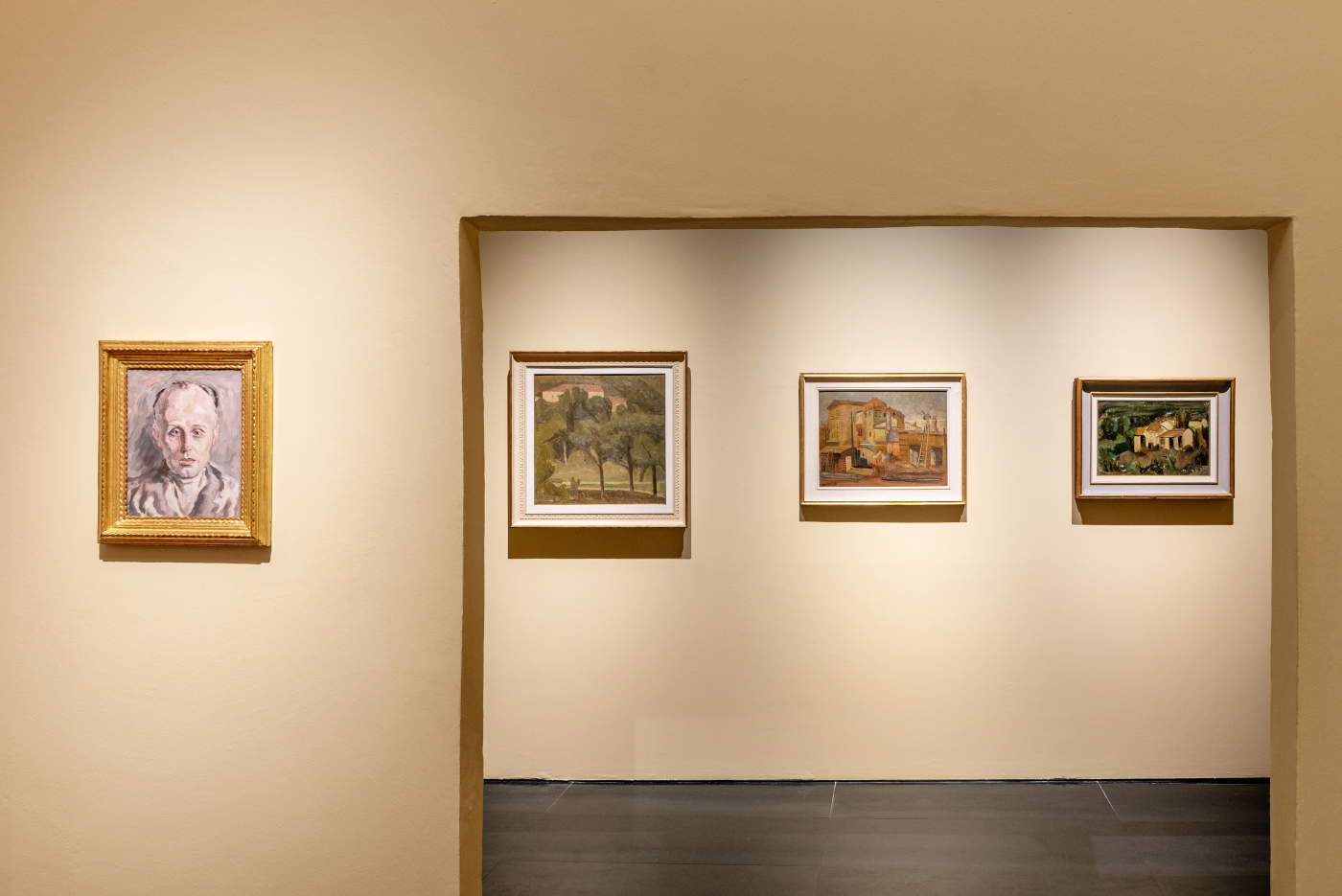From September 28, 2024 to April 2, 2025, the Museo Novecento in Florence is hosting the exhibition Retroscena - Stories of Resistance and Dissidence in the Della Ragione Collection. Curated by Sergio Risaliti, Eva Francioli and Chiara Toti, the exhibition investigates the role of Italian art between the 1920s and 1940s through works from the Alberto Della Ragione Collection.
Nearly eighty years after Italy’s liberation from Nazi-Fascism, the exhibition focuses on the works of artists who lived through, suffered or opposed the policies of Fascism, going through the dark and terrible days of war and racial laws, those of cultural persecution, and finally the Civil War. Artists who were beloved by Della Ragione, a collector of an art compromised with the adventures of existence, with the pain and evil of living, drawn into the motions of resistance and rebellion to the darkest fate of man and societies. Some of them, such as Mario Mafai, Antonietta Raphaël, Renato Guttuso, were housed in the engineer’s villa near Genoa to escape the persecution of the regime. The works selected for the exhibition make it possible not only to investigate the choices made by thenaval engineer, who established intense human as well as professional relationships with many of the artists exhibited here, but also to question the work of these protagonists of Italian art in one of the darkest seasons of our recent history.
The civil and political commitment emerges, that stance that was above all of moral substance and that matured in Italian art a linguistic and stylistic divide between those who lived and worked in a detached vision of life and history and those who otherwise entered into a tormented and desperate contact. Emblematic is the case of Scipione, an artist who would not live through the entire parable of the regime, but whose creations are characterized by a strong visionary charge and a personal reflection on the meaning of life and death, as in Apocalypse. Of a different commitment are Renato Guttuso’s “talking” works, such as Massacro, a kind of engagé manifesto, a page of chronicle and denunciation, influenced by Picasso’s Guernica. Also Fantasia by Mario Mafai, which in an almost allegorical way draws from horrific events a scene as tragic as it is grotesque of human ordeal. A small oil on panel that seems to have inspired years later Pier Paolo Pasolini in Salò or the Hundred and Twenty Days of Sodom.
Thus, the exhibition also aims to present themes and subjects related to tradition such as still life and landscape, to bring out the backgrounds, the places where the artists’ emotions and disturbances are hidden. The rise of a resistance is made manifest that is only revealed by looking beyond what is immediately visible.
“Alberto Della Ragione is a figure of an important collector and patron who is linked to the city of Florence,” said Councillor for Culture Giovanni Bettarini. “This exhibition traces artists linked to the period of the fascist dictatorship and through their works goes to investigate artistic, personal but perhaps also social aspects linked to that terrible period.”
“As the great public and critical success of the exhibition dedicated to Louise Bourgeois continues, the Museo Novecento is ready to inaugurate another exhibition project,” said Museo Novecento director Sergio Risaliti. “From Saturday, Sept. 28, it will be possible to admire the works of a nucleus of artists linked to Alberto Della Ragione, the collector who donated to the city of Florence so many works that are now part of the collection on display on the second floor of the Ex-Leopoldine. The Retroscena exhibition has a decidedly political character, along with a historical and artistic one. It focuses on a series of works that directly express the moral position taken by the artist towards the Fascist dictatorship. Others do so by pronouncing behind the scenes the traumas and anxieties generated in those dark and violent years, dominated by an inhuman regime, racial laws, deportations, destruction and finally the civil war of liberation.”
For info: www.museonovecento.it
Hours: Daily 11 a.m. to 8 p.m. Closed Thursdays.
Photo by Leonardo Morfini. Courtesy of Museo Novecento, Florence.
 |
| Florence, an exhibition at the Museo Novecento on artists' moral stance toward fascism |
Warning: the translation into English of the original Italian article was created using automatic tools. We undertake to review all articles, but we do not guarantee the total absence of inaccuracies in the translation due to the program. You can find the original by clicking on the ITA button. If you find any mistake,please contact us.